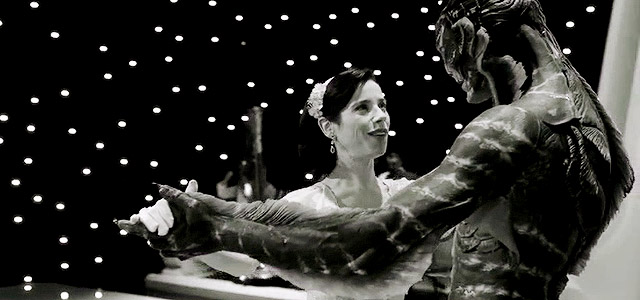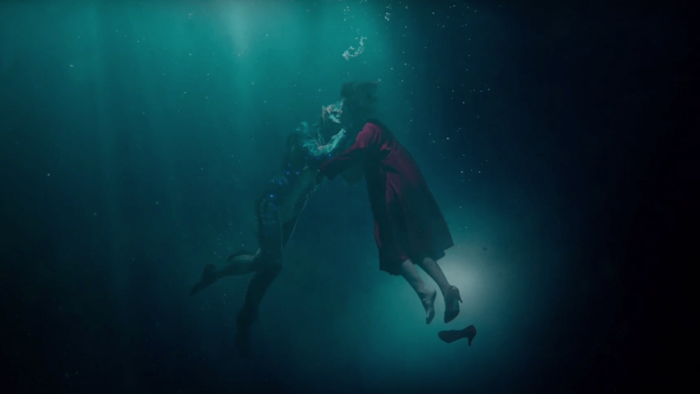Guillermo del Toro has been an underdog his entire life. Throughout his filmmaking career, he has constantly had to fight tooth-and-nail to get his cinematic visions realized. As a child growing up in Mexico, del Toro fell in love with cinema, with a specific interest in the macabre. He loved Universal’s monster movies, the most influential of which for him was The Creature From the Black Lagoon. That film’s central antagonist, Gill-man, didn’t seem like much of an antagonist at all to del Toro. He was an oppressed member of society who had just as much a right to get the girl and have a happy ending as anyone else. But alas, 1954 was a different time. With The Shape of Water, del Toro chronicles the struggles of the downtrodden and oppressed and shows the world how cinema is ultimately what saves them.
The film is set in Baltimore in 1962, which immediately immerses us in a world occupied by the most oppressed members of society. Baltimore as a setting comes with its own thematic value, seeing as the Baltimore Riots of 1968 were just a few short years away, and the time period is arguably even more striking. It paints a picture of an America on the brink, paranoid about the chance of a Russian invasion and desperately trying to win the Space Race. This leaves little room for the country to focus any resources on those who have none.
Our main characters are a motley crew of lovable misfits. Zelda is an African American woman who works as a janitor and seems to never be heard by the men in her life. The higher-ups at the facility and even her husband completely ignore her, with only her interactions with Eliza giving her a chance to speak and be heard. Giles is a struggling artist and a gay man who isn’t welcomed by anyone and is constantly pining for the days of his youth. The Asset is a beautiful creature who is misunderstood by the facility and Strickland, whose berating and torture slowly turns him into the monster they believe he is. Strickland is not oppressed, at all. He is a high-ranking government official who begins the film at the height of his power and is unable or unwilling to see past his own selfish wants and desires to care about anyone or anything else.

And then, of course, there’s Eliza. She is a mute woman, unable to speak for herself and incredibly self-conscious about the scars on her neck that are the assumed cause. To speak for her, Eliza turns to cinema. She and Giles live in a couple of apartments directly over a 24-hour theater, with the cinema quite literally connecting the two of them. They spend their time together watching television and discussing classic films and performances and replicating the dance moves of those on television. In one particularly affecting scene, they watch the tap-dancing Mr. Bojangles on television as Eliza’s reflection is imposed on the man himself. She sees herself in Bojangles, an oppressed individual who made the best of his life by devoting it to the joys of cinema and theater.
It is through cinema that Eliza is also able to begin communicating with The Asset. In their initial visits, she is able to entice him, communicate with him, and teach him solely through the use of cinematic soundtracks. After later escaping with him and taking him home, The Asset finds wonder in the joys of cinema. He is fascinated and briefly occupied with the Mr. Ed program on television before being frightened away by Giles and his cat. The Asset eats the cat and accidentally injures Giles. He is terrified and still traumatized by his treatment at the hands of Strickland, which leads to him running away, fearing the repercussions of his actions. Yet it is cinema that soothes him. Eliza finds him downstairs in the theater, transfixed by the film on the screen.
It is cinema that brings all of these individuals together and allows them to become a more formidable whole. Zelda is given the strength to stand-up to the men in her life, taking a stand against her unloving husband, Bruce, when he sells out the location of Eliza and the asset. Giles is given a piece of his youth back in the form of a fuller head of hair, but he is also able to take ownership of his art. He is inspired by The Asset to paint, not for a company or an advertisement, but for himself. The Asset is nurtured and shown true love and is thus able to become the fullest version of himself.
In her relationship with The Asset, Eliza finds joy and love. She is able to stand up for those who have no voice and truly make a difference in the world. As their relationship blossoms, she becomes more confident and assured of herself. In an especially touching scene, The Asset’s powers even give her the chance to truly speak through cinema. As she tries to communicate just how much she loves him, the world gives way and she sees them in cinema itself. That is where she is home, that is where she is most confident, and it quite literally gives her a voice.

As these characters grow and experience success together, Strickland fails. In losing The Asset, he loses his power and begins to lose control of the life he has engineered for himself. As his decaying fingers turn more and more black, Strickland loses his grip on all that he knows. He is an oppressor, who no longer has the ability to oppress and it drives him to insanity. In his final moments in the film, he desperately tries once more to take away all that our heroes love. He attacks Zelda, hits Giles, and shoots The Asset and Eliza. When The Asset then gets up and cuts Strickland’s throat, it is the completion of his downfall. Left without a voice, Strickland is just as powerless as he longed for everyone else in his life to be.
By contrast, The Asset saves Eliza by taking what she saw as her biggest flaw and turning it into something beautiful. The scars on her neck become gills and she is able to live out her happily-ever-after with The Asset.

Del Toro was finally able to give the Gill-man his happy ending and fight for the rights of the oppressed all over the world at the same time. In an era where our leaders would have us distance ourselves from one another through prejudices and hatred, del Toro has crafted a film that gives us the answer he sees before us: cinema. Art, creation, the things the characters love in The Shape of Water is what saves them from themselves and from the world around them. It seems only fitting that this film would be the one to win del Toro the Oscar and finally set him free from his underdog status. For the first time in his career, del Toro holds all the power and I cannot wait to see what he does with it.